
Women often like to pamper their nails, but both sexes should take regular steps to ensure the health of both their finger- and toenails. Not only do diseased nails look unattractive, but by adopting a nail maintenance routine you may notice changes in your nails that, when pointed out to your general practitioner, could indicate a serious underlying illness. There are several causes of crumbling nails, but the problem can be fixed once it is diagnosed and treatment started.
Onychomycosis
This is a fungal nail infection that most commonly occurs in toenails, but occasionally in fingernails. It is simple to treat if discovered in time. Initial signs of onychomycosis include a thickening of the nail, nail discoloration and a change in nail shape. The nail becomes brittle and crumbles easily. While at first this might seem to be primarily a cosmetic concern, it can lead to bigger health problems if it goes untreated. There are lots of antifungal ointments and creams for this condition, but if it has gotten to quite a serious stage, a 30-minute laser treatment deals with it effectively.
Lichen Planus
Lichen planus is another nail disease that causes thinning and brittleness of the nail, leading to crumbling. There tends to be quite a lot of inflammation with this particular infection and you may notice ridges lengthwise on your nail. This is treated with a steroid injection into the proximal nail fold.
Nail Psoriasis
Psoriasis is rarely confined to the nails; if you have skin psoriasis, it only infrequently progresses to your nails. However, you will probably be aware that you have psoriasis well before it affects the quality of your nails and will have lots of other symptoms besides. Basically, as the structures underlying your nails become unhealthy from the psoriasis, your nails weaken and start to crumble. Your doctor will treat your nail psoriasis along with your skin problem.
General Nail Health
While it is best to rule out any nasty diseases first, your crumbling nails could be the result of nutritional deficiencies and/or bad nail care. People often think that using nail varnish protects your nails, which is untrue; nail polish removers use harsh chemicals or alcohol that can dry your nails out. Moisturize your nails if you use these products and give your nails a break sometimes, leaving them bare. Put a sunblock on your nails in the summer to prevent further drying and wear rubber gloves if you have to put your hands in water. Vitamin A helps prevent nail brittleness and other vitamins and minerals good for all-around nail health include B12, B5, potassium, zinc, iron and calcium. Drink plenty of water and juices and supplement with essential fatty acids for optimum nail health.
Related Articles

How to Repair Damaged Nails
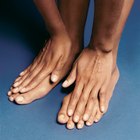
How to Make Nails Thicker
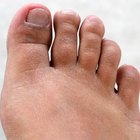
How to Kill a Nail Bed

How to Treat Dry Nails

If You Soak Your Nails in Water Will ...

How to Make Your Nails Hard

How to Naturally Treat a Fungal ...

How to Get Lint Out of Your Nails

Coconut Oil & Nail Fungus

Cures for Acetone Damaged Nails

Do Nails Grow Faster With or Without ...
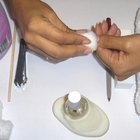
Ingredients of Fingernail Polish Remover

The Best Products for Thin Peeling ...

Subungual Warts and Treatment

How to Whiten Yellow Toenails
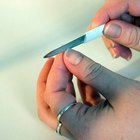
How to Regrow Nails
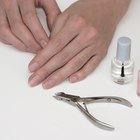
What Does it Mean When the White Part ...

Vitamins for Mental Alertness

Safety Hazards of Acetone

The Effects of Poor Personal Hygiene
References
Writer Bio
Steve Sparkes started writing professionally in 1982. He was a journalist and photographer for "The New York Waste" magazine for a decade. Sparkes has a diploma of art and design and a Bachelor of Arts in history of art from the South-East Essex School of Art. He also has a Master of Arts in photography from the London School of Printing and Graphic Arts.
Photo Credits
three suntanning toes image by Daria Miroshnikova from Fotolia.com